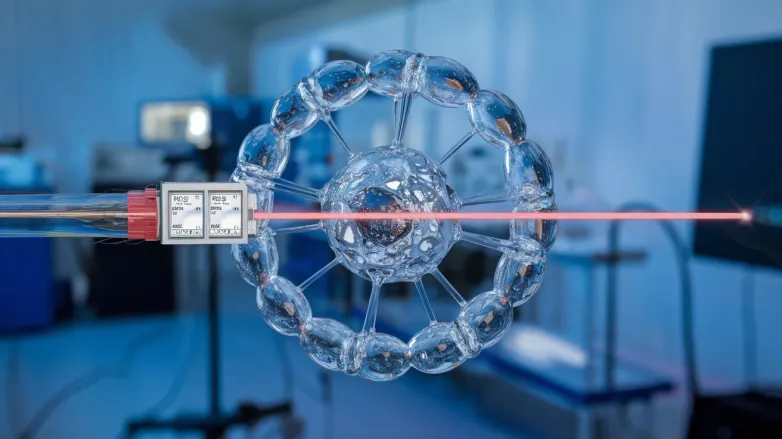Breakthrough Polymer Strategy Boosts Perovskite Solar Efficiency to 25.6%
- Revolutionizing solar energy: A global team boosts perovskite cell efficiency to 25.6% with a novel polymer additive, paving the way for cost-effective, stable solar solutions.

An international research team, including members from EPFL, CNR SCITEC, and other institutions, has developed an innovative approach to enhance the efficiency of inverted perovskite solar cells. By using an n-type polymeric additive, they stabilized C60 molecules, which are crucial for electron transport layers (ETLs) in these cells. This advancement allowed the creation of a solar cell with a record-breaking efficiency of 25.6% for perovskite devices using solution-processed C60 ETLs, overcoming previous challenges related to C60 aggregation that required costly thermal evaporation methods.
The researchers introduced a polymeric additive, TPDI-BTI, to improve the stability and performance of C60 ETLs. This additive, constructed from electron-deficient components, enabled better film formability, energy levels, and electron transport dynamics, enhancing the photovoltaic performance and stability of the cells. The solar cell, featuring a complex structure with various layers including indium tin oxide and nickel(II) oxide, demonstrated superior stability under continuous light and high temperatures. The study highlights the potential of C60-polymer mixed ETLs for developing cost-effective, efficient, and stable solution-processed perovskite solar cells.
How did researchers achieve record efficiency in inverted perovskite solar cells with C60-polymer ETLs?
- Polymeric Additive Innovation: The researchers introduced a novel n-type polymeric additive, TPDI-BTI, which played a crucial role in stabilizing C60 molecules. This stabilization is essential for maintaining the integrity and performance of the electron transport layers (ETLs) in perovskite solar cells.
- Enhanced Film Formability: The TPDI-BTI additive improved the film-forming properties of the C60 ETLs. This enhancement is significant because it allows for a more uniform and defect-free layer, which is critical for efficient electron transport and overall cell performance.
- Improved Energy Levels: By incorporating electron-deficient components into the polymeric additive, the researchers were able to fine-tune the energy levels of the ETLs. This adjustment is vital for optimizing the alignment of energy levels between different layers in the solar cell, facilitating better charge transfer and reducing energy losses.
- Superior Electron Transport Dynamics: The addition of TPDI-BTI improved the electron transport dynamics within the ETLs. This improvement means that electrons can move more freely and efficiently through the layer, reducing recombination losses and enhancing the overall efficiency of the solar cell.
- Overcoming C60 Aggregation: One of the significant challenges with C60 ETLs is their tendency to aggregate, which can lead to performance degradation. The polymeric additive effectively mitigated this issue, allowing for the use of solution-processed C60 ETLs without the need for expensive thermal evaporation methods.
- Record-Breaking Efficiency: The innovative approach led to the development of a perovskite solar cell with a record efficiency of 25.6%. This achievement is particularly noteworthy for solution-processed C60 ETLs, marking a significant milestone in the pursuit of high-efficiency, cost-effective solar technologies.
- Enhanced Stability: The solar cells demonstrated remarkable stability under continuous light exposure and high temperatures. This stability is crucial for the practical deployment of perovskite solar cells, as it ensures long-term performance and reliability.
- Complex Layer Structure: The solar cell design included a complex structure with various layers, such as indium tin oxide and nickel(II) oxide, which contributed to its high performance. Each layer was carefully engineered to optimize the overall efficiency and stability of the device.
- Cost-Effectiveness: By enabling the use of solution-processed C60 ETLs, the research offers a pathway to more cost-effective manufacturing processes for perovskite solar cells. This advancement could lead to more affordable solar energy solutions, making renewable energy more accessible.
- Potential for Future Developments: The study highlights the potential of C60-polymer mixed ETLs in advancing the field of perovskite solar cells. This approach could pave the way for further innovations and improvements in solar cell technology, driving the transition to sustainable energy sources.
Also read

